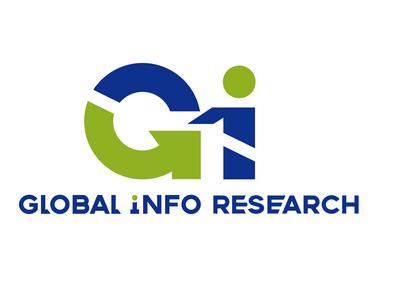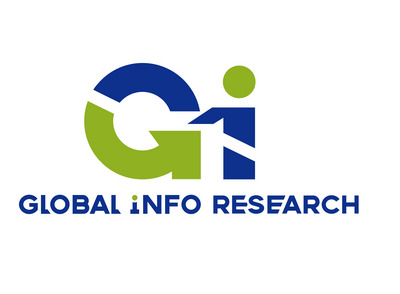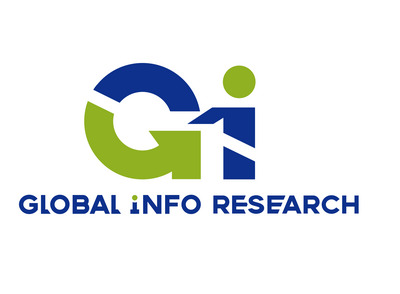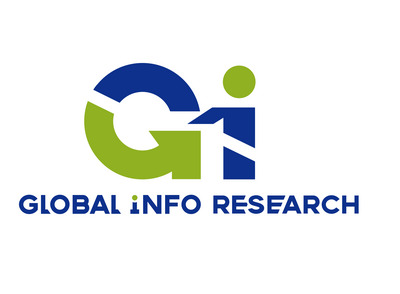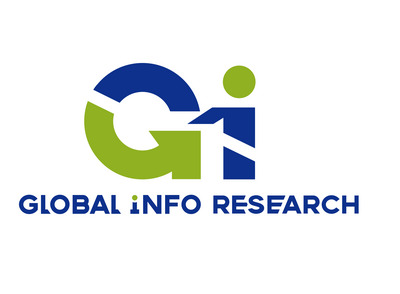
High-Speed Magnetic Levitation Vacuum Pump Market Report:By Key Players, Types, Application, Forecast to 2031
Global Info Research‘s report is a detailed and comprehensive analysis for global High-Speed Magnetic Levitation Vacuum Pump market. Both quantitative and qualitative analyses are presented by manufacturers, by region & country, by Type and by Application. As the High-Speed Magnetic Levitation Vacuum Pump market is constantly changing, this report explores the competition, supply and demand trends, as well as key factors that contribute to its changing demands across many markets. Company profiles and product examples of selected competitors, along with market share estimates of some of the selected leaders for the year 2025, are provided.
According to our (Global Info Research) latest study, the global High-Speed Magnetic Levitation Vacuum Pump market size was valued at US$ 3457 million in 2024 and is forecast to a readjusted size of USD 4706 million by 2031 with a CAGR of 4.5% during review period.
In this report, we will assess the current U.S. tariff framework alongside international policy adaptations, analyzing their effects on competitive market structures, regional economic dynamics, and supply chain resilience.
A high-speed magnetic levitation vacuum pump is a high-end vacuum device that utilizes magnetic bearing technology, allowing the impeller to operate at high speed without physical contact with the pump body. Developed based on magnetic bearing technology, high-speed permanent magnet motor technology, high-frequency vector frequency conversion technology, and high-efficiency fluid mechanics, the device draws moist air into the impeller and pressurizes it at high speed. A single-stage turbo vacuum pump pressurizes air through a single impeller and discharges it through a diffuser and volute. A multi-stage turbo vacuum pump uses multiple impellers to progressively compress the air, producing higher vacuum levels. Air drawn in at different levels produces varying vacuum levels. This core "magnetic levitation" technology distinguishes it from traditional oil-lubricated rotary vane pumps and mechanical bearing turbomolecular pumps, enabling oil-free, maintenance-free, and highly energy-efficient operation. Typical specifications include ultimate vacuum levels of 10 to 70 kPa, air flow rates ranging from 14 to 184 m³/min, and power outputs from 11 to 184 kW. In 2024, the global average price of high-speed magnetic levitation vacuum pumps will be US,000 per unit, with annual sales of approximately 40,000 units, an average annual production capacity of approximately 500-1,000 units per line, and an average industry profit margin of 30%-45%.
Technological Innovation Trends
Features: Extremely high technical barriers require powerful magnetic bearings and cooling systems, primarily dominated by leading international manufacturers. High-speed magnetic levitation vacuum pumps are developing towards higher energy efficiency, faster pumping speeds, and intelligent operation and maintenance. They integrate motor drives and variable frequency control technology to optimize energy consumption; AI algorithms enable predictive maintenance, providing early warning of bearing conditions; and develop corrosion-resistant models suitable for emerging industries such as hydrogen energy. Miniaturization, low vibration, and low noise are also key R&D priorities.
Upstream and Downstream Industry Chain Structure
Upstream: Suppliers of core components, including permanent magnets (NdFeB), magnetic bearings, high-speed motors, sensors, and controller chips. The performance of the magnetic materials and chips directly determines the pump's maximum speed and reliability. Downstream: Papermaking: Used in vacuum dewatering processes (such as dewatering in the wire and press sections), replacing traditional water ring vacuum pumps. This perfectly complements their core advantages of 30-70% energy savings and 100% water savings, addressing the pain points of traditional equipment, such as high energy consumption and the generation of large amounts of process wastewater. Chemical Industry: Vacuum distillation and crystallization. Pharmaceutical Industry: Used for material drying.
Case Study
Before the renovation, a large paper group in South China used multiple traditional water ring vacuum pumps to provide vacuum for the wire and press sections of its paper machines. This resulted in significant annual electricity consumption, large amounts of process water (for sealing and cooling), and wastewater treatment costs.
The renovation plan replaced the outdated equipment with magnetic levitation vacuum pumps. After the renovation, the following improvements were achieved: First, energy savings exceeded 40%, saving millions of yuan in electricity bills annually. Second, 100% water conservation was achieved, completely eliminating process water and wastewater discharge in this process. Third, stable vacuum pressure improved paper dewatering efficiency and consistent paper quality. Finally, the contactless operation of the magnetic bearings eliminates the need for lubrication and mechanical maintenance, reducing labor costs and downtime.
Policy and Market Drivers
Global policies are focusing on improving industrial energy efficiency and eliminating mercury-containing equipment, creating a clear niche for magnetic levitation vacuum pumps in traditional sectors such as papermaking, chemicals, and power generation. The market is primarily driven by the demand for energy-saving transformation in traditional manufacturing industries. This equipment, with its 30%-70% energy savings and zero water consumption, significantly reduces costs and increases efficiency in industries such as papermaking, chemicals, and wastewater treatment, while fully aligning with the transformation to green manufacturing.
Future Outlook
The high-speed magnetic levitation vacuum pump market will continue to grow rapidly alongside green development and upgrades. Domestic substitution will be a key theme over the next five years, with domestic companies gradually breaking through core technologies and seizing market share in the mid-range market. Products will deeply integrate IoT technology to achieve intelligent management throughout their lifecycle, and will find new growth opportunities in cutting-edge technologies such as hydrogen energy and nuclear fusion.
This report is a detailed and comprehensive analysis for global High-Speed Magnetic Levitation Vacuum Pump market. Both quantitative and qualitative analyses are presented by manufacturers, by region & country, by Type and by Application. As the market is constantly changing, this report explores the competition, supply and demand trends, as well as key factors that contribute to its changing demands across many markets. Company profiles and product examples of selected competitors, along with market share estimates of some of the selected leaders for the year 2025, are provided.
Market segment by Type: Power 11kW、 Power 15kW、 Power 45kW、 Power 60kW、 Power 92kW、 Power 126kW、 Other
Market segment by Application:Pulp and Paper Production、 Chemical、 Pharmaceuticals、 Other
Major players covered: Ebara Technology、 Dehaha Group、 Leybold、 IBVC Vacuum、 Edwards、 Kurt J.Lesker、 Kyky Technology、 Pfeiffer Vacuum、 Tianrui、 Bxwell、 Hanbell、 Xinran Compressor (Asia-Pacific Universal Machinery)、 Ensurging、 Greatall、 Cigu、 Kyky
According to our (Global Info Research) latest study, the global High-Speed Magnetic Levitation Vacuum Pump market size was valued at US$ 3457 million in 2024 and is forecast to a readjusted size of USD 4706 million by 2031 with a CAGR of 4.5% during review period.
In this report, we will assess the current U.S. tariff framework alongside international policy adaptations, analyzing their effects on competitive market structures, regional economic dynamics, and supply chain resilience.
A high-speed magnetic levitation vacuum pump is a high-end vacuum device that utilizes magnetic bearing technology, allowing the impeller to operate at high speed without physical contact with the pump body. Developed based on magnetic bearing technology, high-speed permanent magnet motor technology, high-frequency vector frequency conversion technology, and high-efficiency fluid mechanics, the device draws moist air into the impeller and pressurizes it at high speed. A single-stage turbo vacuum pump pressurizes air through a single impeller and discharges it through a diffuser and volute. A multi-stage turbo vacuum pump uses multiple impellers to progressively compress the air, producing higher vacuum levels. Air drawn in at different levels produces varying vacuum levels. This core "magnetic levitation" technology distinguishes it from traditional oil-lubricated rotary vane pumps and mechanical bearing turbomolecular pumps, enabling oil-free, maintenance-free, and highly energy-efficient operation. Typical specifications include ultimate vacuum levels of 10 to 70 kPa, air flow rates ranging from 14 to 184 m³/min, and power outputs from 11 to 184 kW. In 2024, the global average price of high-speed magnetic levitation vacuum pumps will be US,000 per unit, with annual sales of approximately 40,000 units, an average annual production capacity of approximately 500-1,000 units per line, and an average industry profit margin of 30%-45%.
Technological Innovation Trends
Features: Extremely high technical barriers require powerful magnetic bearings and cooling systems, primarily dominated by leading international manufacturers. High-speed magnetic levitation vacuum pumps are developing towards higher energy efficiency, faster pumping speeds, and intelligent operation and maintenance. They integrate motor drives and variable frequency control technology to optimize energy consumption; AI algorithms enable predictive maintenance, providing early warning of bearing conditions; and develop corrosion-resistant models suitable for emerging industries such as hydrogen energy. Miniaturization, low vibration, and low noise are also key R&D priorities.
Upstream and Downstream Industry Chain Structure
Upstream: Suppliers of core components, including permanent magnets (NdFeB), magnetic bearings, high-speed motors, sensors, and controller chips. The performance of the magnetic materials and chips directly determines the pump's maximum speed and reliability. Downstream: Papermaking: Used in vacuum dewatering processes (such as dewatering in the wire and press sections), replacing traditional water ring vacuum pumps. This perfectly complements their core advantages of 30-70% energy savings and 100% water savings, addressing the pain points of traditional equipment, such as high energy consumption and the generation of large amounts of process wastewater. Chemical Industry: Vacuum distillation and crystallization. Pharmaceutical Industry: Used for material drying.
Case Study
Before the renovation, a large paper group in South China used multiple traditional water ring vacuum pumps to provide vacuum for the wire and press sections of its paper machines. This resulted in significant annual electricity consumption, large amounts of process water (for sealing and cooling), and wastewater treatment costs.
The renovation plan replaced the outdated equipment with magnetic levitation vacuum pumps. After the renovation, the following improvements were achieved: First, energy savings exceeded 40%, saving millions of yuan in electricity bills annually. Second, 100% water conservation was achieved, completely eliminating process water and wastewater discharge in this process. Third, stable vacuum pressure improved paper dewatering efficiency and consistent paper quality. Finally, the contactless operation of the magnetic bearings eliminates the need for lubrication and mechanical maintenance, reducing labor costs and downtime.
Policy and Market Drivers
Global policies are focusing on improving industrial energy efficiency and eliminating mercury-containing equipment, creating a clear niche for magnetic levitation vacuum pumps in traditional sectors such as papermaking, chemicals, and power generation. The market is primarily driven by the demand for energy-saving transformation in traditional manufacturing industries. This equipment, with its 30%-70% energy savings and zero water consumption, significantly reduces costs and increases efficiency in industries such as papermaking, chemicals, and wastewater treatment, while fully aligning with the transformation to green manufacturing.
Future Outlook
The high-speed magnetic levitation vacuum pump market will continue to grow rapidly alongside green development and upgrades. Domestic substitution will be a key theme over the next five years, with domestic companies gradually breaking through core technologies and seizing market share in the mid-range market. Products will deeply integrate IoT technology to achieve intelligent management throughout their lifecycle, and will find new growth opportunities in cutting-edge technologies such as hydrogen energy and nuclear fusion.
This report is a detailed and comprehensive analysis for global High-Speed Magnetic Levitation Vacuum Pump market. Both quantitative and qualitative analyses are presented by manufacturers, by region & country, by Type and by Application. As the market is constantly changing, this report explores the competition, supply and demand trends, as well as key factors that contribute to its changing demands across many markets. Company profiles and product examples of selected competitors, along with market share estimates of some of the selected leaders for the year 2025, are provided.
Market segment by Type: Power 11kW、 Power 15kW、 Power 45kW、 Power 60kW、 Power 92kW、 Power 126kW、 Other
Market segment by Application:Pulp and Paper Production、 Chemical、 Pharmaceuticals、 Other
Major players covered: Ebara Technology、 Dehaha Group、 Leybold、 IBVC Vacuum、 Edwards、 Kurt J.Lesker、 Kyky Technology、 Pfeiffer Vacuum、 Tianrui、 Bxwell、 Hanbell、 Xinran Compressor (Asia-Pacific Universal Machinery)、 Ensurging、 Greatall、 Cigu、 Kyky
To Get More Details About This Study, Please Click Here: https://www.globalinforesearch.com/reports/3112154/high-speed-magnetic-levitation-vacuum-pump
The overall report focuses on primary sections such as – market segments, market outlook, competitive landscape, and company profiles. The segments provide details in terms of various perspectives such as end-use industry, product or service type, and any other relevant segmentation as per the market’s current scenario which includes various aspects to perform further marketing activity. The market outlook section gives a detailed analysis of market evolution, growth drivers, restraints, opportunities, and challenges, Porter’s 5 Force’s Framework, macroeconomic analysis, value chain analysis and pricing analysis that directly shape the market at present and over the forecasted period. The drivers and restraints cover the internal factors of the market whereas opportunities and challenges are the external factors that are affecting the market. The market outlook section also gives an indication of the trends influencing new business development and investment opportunities.
The Primary Objectives in This Report determine the size of the total market opportunity of global and key countries,assess the growth potential for High-Speed Magnetic Levitation Vacuum Pump and competitive factors affecting the marketplace,forecast future growth in each product and end-use market. Also,this report profiles key players in the global High-Speed Magnetic Levitation Vacuum Pump market based on the following parameters - company overview, sales quantity, revenue, price, gross margin, product portfolio, geographical presence, and key developments.
High-Speed Magnetic Levitation Vacuum Pump market is split by Type and by Application. For the period 2020-2031, the growth among segments provides accurate calculations and forecasts for consumption value by Type, and by Application in terms of volume and value. This analysis can help you expand your business by targeting qualified niche markets.
Market segment by region, regional analysis covers North America (United States, Canada, and Mexico),Europe (Germany, France, United Kingdom, Russia, Italy, and Rest of Europe),Asia-Pacific (China, Japan, Korea, India, Southeast Asia, and Australia),South America (Brazil, Argentina, Colombia, and Rest of South America),Middle East & Africa (Saudi Arabia, UAE, Egypt, South Africa, and Rest of Middle East & Africa).
The report provides insights regarding the lucrative opportunities in the High-Speed Magnetic Levitation Vacuum Pump Market at the country level. The report also includes a precise cost, segments, trends, region, and commercial development of the major key players globally for the projected period.
The High-Speed Magnetic Levitation Vacuum Pump Market report comprehensively examines market structure and competitive dynamics. Researching the High-Speed Magnetic Levitation Vacuum Pump market entails a structured approach beginning with clearly defined objectives and a comprehensive literature review to understand the current landscape. Methodologies involve a mix of primary research through interviews, surveys, and secondary research from industry reports and databases. Sampling strategies ensure representation, while data analysis utilizes statistical and analytical techniques to identify trends, market sizing, and competitive landscapes. Key areas of focus include trend analysis, risk assessment, and forecasting. Findings are synthesized into a detailed report, validated through peer review or expert consultation, and disseminated to stakeholders, with ongoing monitoring to stay abreast of developments.
Global Info Research is a company that digs deep into global industry information to support enterprises with market strategies and in-depth market development analysis reports. We provides market information consulting services in the global region to support enterprise strategic planning and official information reporting, and focuses on customized research, management consulting, IPO consulting, industry chain research, database and top industry services. At the same time, Global Info Research is also a report publisher, a customer and an interest-based suppliers, and is trusted by more than 30,000 companies around the world. We will always carry out all aspects of our business with excellent expertise and experience.
Contact Us:
Global Info Research
Web: https://www.globalinforesearch.com
Email: report@globalinforesearch.com
CN: 0086-176 6505 2062
HK: 00852-58030175
Global Info Research
Web: https://www.globalinforesearch.com
Email: report@globalinforesearch.com
CN: 0086-176 6505 2062
HK: 00852-58030175


